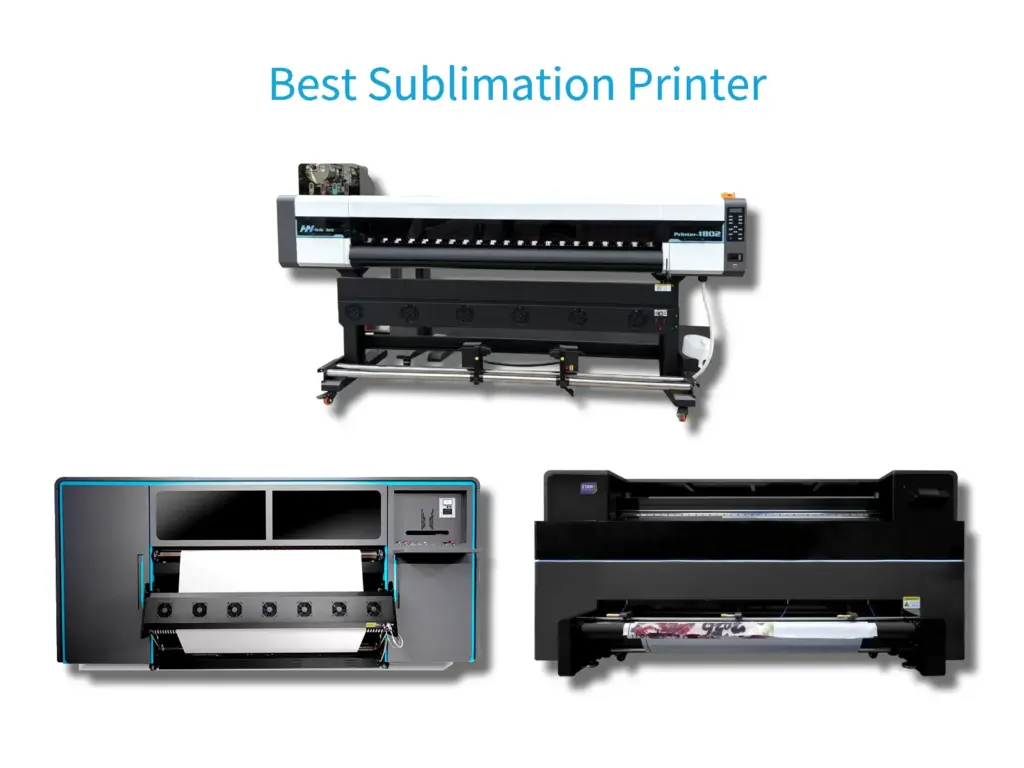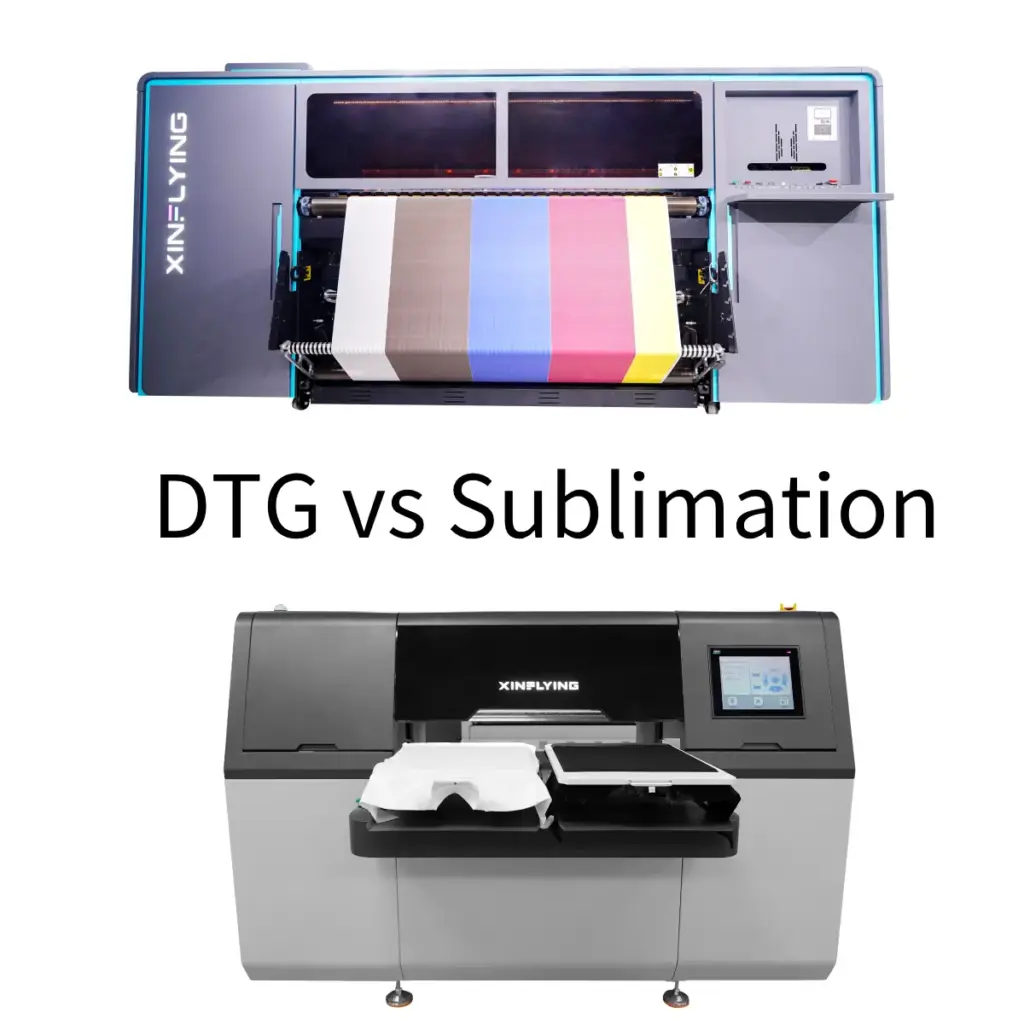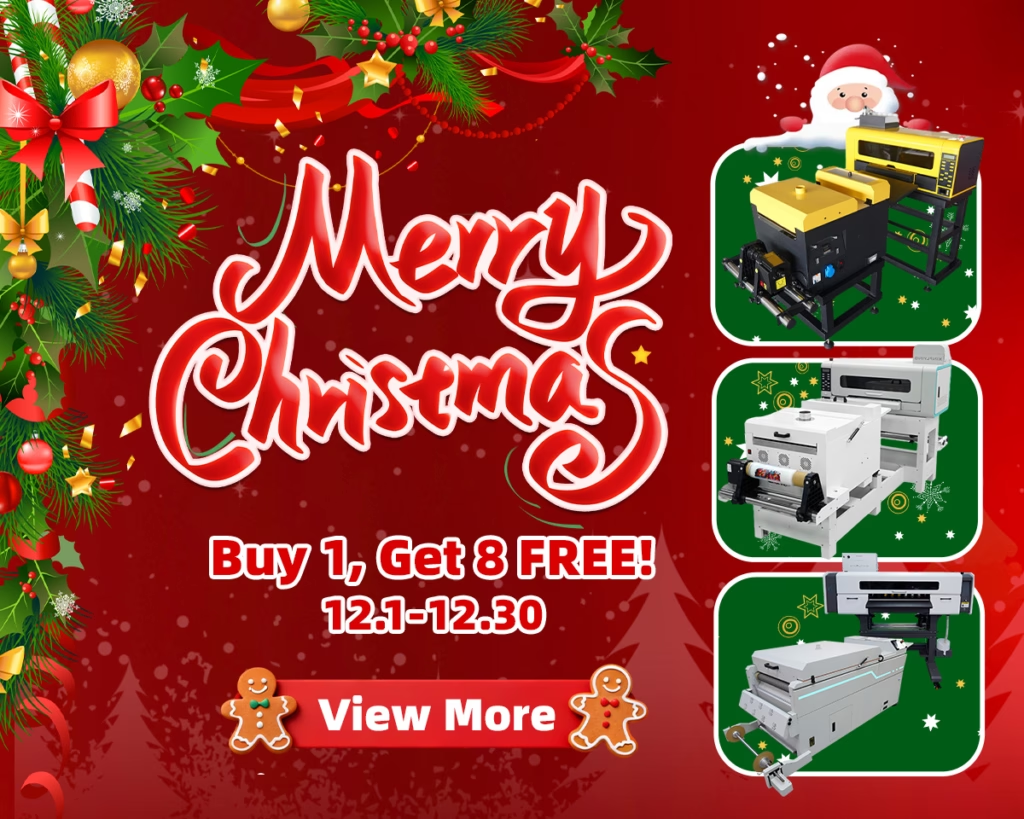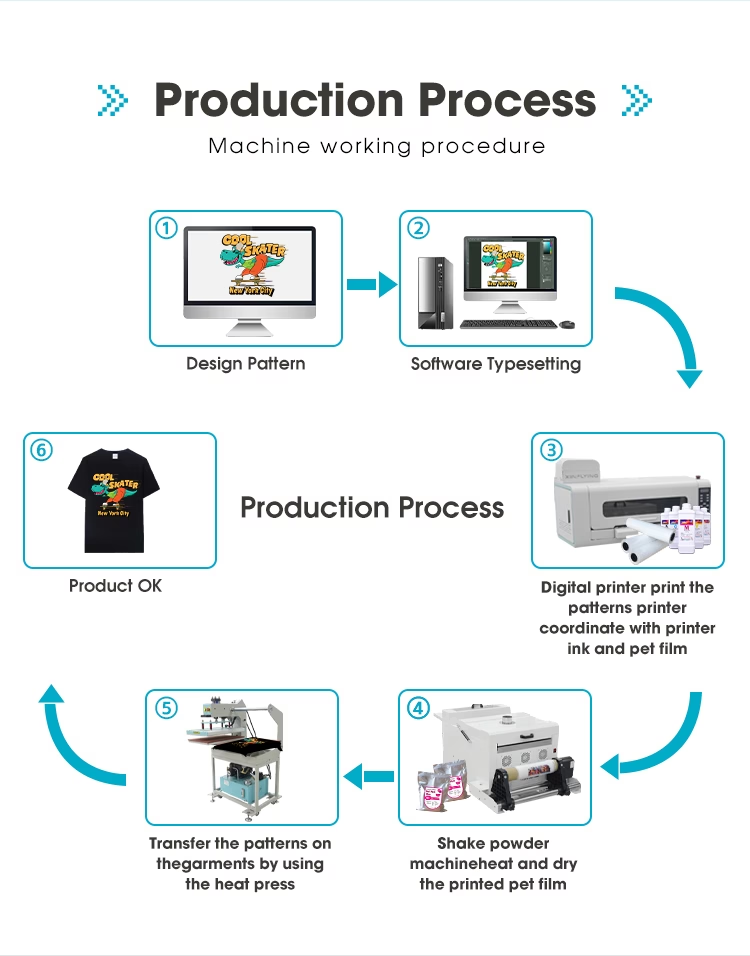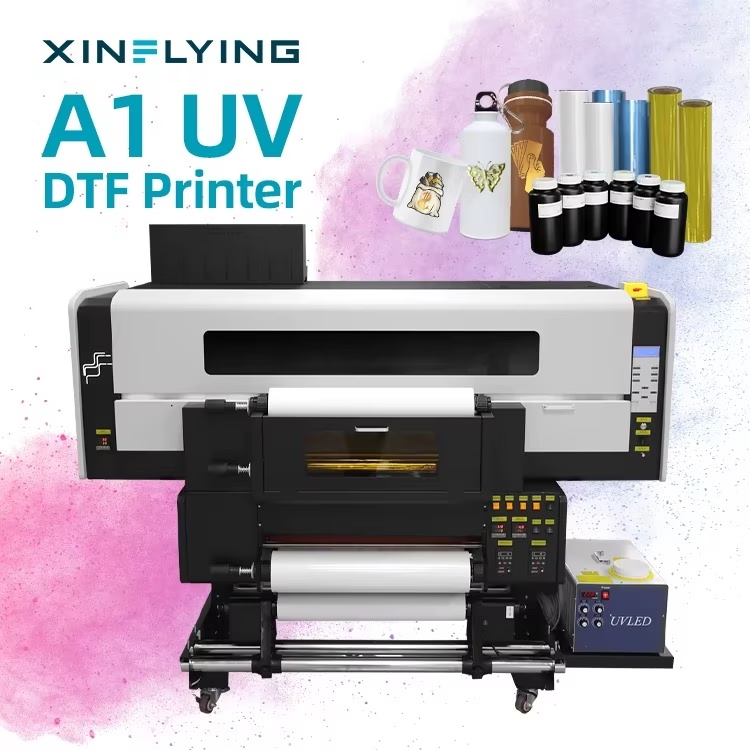Tulostustekniikka on edennyt pitkälle, tarjoaa erilaisia tapoja herättää kuvia eloon eri pinnoilla. Kaksi suosittua tulostustekniikkaa alalla ovat nykyään UV-DTF-tulostus ja DTF-tulostus. Vaikka molemmat menetelmät tarjoavat vaikuttavia tuloksia, niillä on erityisiä piirteitä, jotka erottavat ne toisistaan. Tässä artikkelissa, perehdymme kunkin tulostustavan yksityiskohtiin, vertailla vahvuuksiaan ja rajoituksiaan, ja antaa ohjeita oikean tulostustavan valitsemiseksi tarpeisiisi.
Mikä on UV DTF -tulostus?
UV DTF -tulostus, lyhenne sanoista Ultraviolet Direct to Film -tulostus, on uusinta tekniikkaa, joka mahdollistaa korkealaatuisen kuvansiirron erilaisille alustoille. Toisin kuin perinteiset tulostusmenetelmät, UV DTF -tulostus käyttää ultraviolettisäteilyä (UV) UV-valolla kovetetut musteet takaavat poikkeuksellisen kestävyyden ja eloisat värit.
Kuinka käyttää UV DTF -tulostinta?
Askel 1: Suunnittelu RIP -ohjelmistossa
Ensinnäkin, valmistele taideteos tietokoneen RIP-ohjelmistolla. Aseta sitten UV DTF A -kalvo UV DTF -tulostimen alustalle.
Askel 2: Tulosta filmille
Esitäytä kasetti CMYK-musteella, valkoista mustetta, ja laka tulostaaksesi mallin UV DTF -elokuvalle.
Askel 3: Laminoitu B-kalvo
Aseta painettu A-kalvo laminointikoneeseen kiinnittääksesi sen B-kalvoon.
Askel 4: Aseta kalvo tuotteiden päälle
Kuori kuvion A -elokuva ja kiinnitä se tuotteeseen, jonka haluat tulostaa. Kuori sitten hitaasti B -elokuva, ja tuotteesi on valmis.
UV DTF -tulostuksen etuja ja haittoja

UV DTF -tulostuksen edut
- Korkea kuvanlaatu ja terävyys
UV-DTF-tulostus tarjoaa poikkeuksellisen kuvanlaadun terävillä yksityiskohdilla ja eloisilla väreillä. UV-musteilla on laaja värivalikoima, Sisältää tarkan värin jäljennöksen.
- Laaja värivalikoima
UV-DTF-tulostus mahdollistaa laajan värivalikoiman tulostamisen eri alustoille, tuloksena on rikkaat ja eloisat mallit.
- Nopea tuotantoaika
Verrattuna perinteisiin tulostusmenetelmiin, UV-DTF-tulostus tarjoaa nopeammat tuotantoajat. UV-musteet kuivuvat lähes välittömästi, eliminoi pitkien kuivausjaksojen tarpeen.
- Mahdollisuus tulostaa erilaisille alustoille
UV DTF -tulostus tarjoaa joustavuutta tulostaa monenlaisille materiaaleille, mukaan lukien kankaat, muovit, lasi, ja enemmän. Tämä monipuolisuus tekee siitä ihanteellisen valinnan yrityksille, jotka haluavat monipuolistaa tuotetarjontaansa.
UV-DTF-tulostuksen rajoitukset
- UV-musteiden ja laitteiden kustannukset
UV-DTF-tulostus vaatii erikoistuneita UV-musteita ja -laitteita, joka voi olla kalliimpaa verrattuna perinteisiin painomateriaaleihin. Lisäksi, UV-musteilla voi olla lyhyempi säilyvyysaika, vaativat toistuvia vaihtoja.
- Rajoitettu joustavuus tiettyjen materiaalien kanssa
UV-DTF-tulostusta voidaan käyttää erilaisille alustoille, jotkin materiaalit eivät ehkä ole sopivia rakenteensa tai pintakoostumuksensa vuoksi. On tärkeää testata painatus eri materiaaleille ennen laajamittaiseen tuotantoon sitoutumista.
- Huolto- ja huoltovaatimukset
UV-DTF-tulostuslaitteet vaativat säännöllistä huoltoa tasaisen suorituskyvyn varmistamiseksi. Tähän sisältyy tulostinpäiden puhdistaminen ja optimaaliset olosuhteet UV-kovettumiselle.
Mikä on DTF-tulostus?
DTF-tulostus, tai Suoraan filmitulostukseen, on tekniikka, joka sisältää kuvioiden painamisen kalvolle erikoismusteilla, jotka siirretään myöhemmin halutulle alustalle.
Kuinka käyttää DTF-tulostinta?
Askel 1: Suunnittelu RIP -ohjelmistossa
Samanlainen kuin UV-DTF-tulostus, suunnittele taideteos graafisen suunnittelun ohjelmistolla, varmistaa halutun suunnittelun ja kuvanlaadun.
Askel 2: Tulosta lemmikkieläinelokuvalle
Aseta PET-kalvo laitteeseen DTF tulostin lokerot ja aloita tulostus. Sitten suunnittelukuvio siirretään siihen.
Askel 3: Liimaa mustetta jauheella
Jauheravistelukoneella, se DTF -liimajauhe voi levittää tasaisesti PET-kalvolle ja kuivata grafiikkaa.
Askel 4: Siirtokuvio tekstiilille
Aseta DTF PET -kalvo alustan päälle ja siirrä kuvio lämpöpuristuskoneella.
DTF-tulostuksen plussat ja miinukset

DTF -tulostuksen edut
- Kustannustehokas tulostusmenetelmä
DTF-tulostusta pidetään kustannustehokkaana, johtuen pääasiassa alhaisemmista laite- ja mustekustannuksistaan verrattuna UV-DTF-tulostukseen. Tämä tekee siitä pienyritysten ja painoalalle uskaltavia yksityishenkilöitä saatavilla.
- Monipuolisuus yhteensopivien alustojen suhteen
Kuten UV-DTF-tulostus, DTF-tulostus mahdollistaa tulostamisen erilaisille alustoille, mukaan lukien kankaat, keramiikka, muovit, ja enemmän. Tämä monipuolisuus laajentaa tuotevalikoimaa, joka voidaan tuottaa DTF-tulostuksella.
- Kyky saavuttaa eloisia värejä ja hienoja yksityiskohtia
DTF-tulostus voi tuottaa eloisia ja eloisia värejä, sekä hienoja yksityiskohtia, joten se sopii monimutkaisiin malleihin ja monimutkaisiin taideteoksiin.
- Helppo käyttää ja puhdistaa
DTF-tulostimet ovat käyttäjäystävällisiä, vaativat vain vähän asennusta ja huoltoa. Lisäksi, puhdistusprosessi on suhteellisen yksinkertainen, mahdollistaa sujuvamman toiminnan ja vähentää seisokkeja.
DTF -tulostuksen rajoitukset
- Rajoitettu värivalikoima verrattuna UV DTF:ään
Vaikka DTF-tulostus voi saavuttaa eloisia värejä, sen väriskaala voi olla kapeampi verrattuna UV DTF:ään, rajoittaa toistettavien sävyjen ja sävyjen valikoimaa.
- Pidempi tuotantoaika
DTF-tulostus saattaa vaatia lisävaiheita kuvion siirtämiseksi alustalle, mikä voi johtaa pidempään tuotantoaikaan verrattuna UV-DTF-tulostukseen.
- Saattaa vaatia lisätoimenpiteitä tietyille kankaille
Tietyt kankaat saattavat vaatia esikäsittelyä ennen painamista DTF -musteet. Tämä voi monimutkaistaa ja lisätä aikaa koko tulostusprosessiin.
UV DTF vs DTF: Vertailu

A. Tulostuslaadun vertailu
Resoluutio ja terävyys
Sekä UV-DTF- että DTF-tulostus voi tuottaa korkearesoluutioisia tulosteita terävillä yksityiskohdilla. kuitenkin, UV-DTF-tulostus voi tarjota hieman terävämpiä tuloksia UV-kovetusprosessin vuoksi, mikä parantaa musteen pysyvyyttä.
Värien tarkkuus ja eloisuus
UV-DTF-tulostus tarjoaa yleensä laajemman värivalikoiman, mahdollistaa tarkemman värintoiston ja eloisan kuvion. DTF-tulostus, mutta kykenee eläviin väreihin, voi olla rajoituksia tiettyjen sävyjen ja sävyjen saavuttamisessa.
B -. Substraattityypit
Kangasvaihtoehdot
Sekä UV-DTF- että DTF-tulostusta voidaan käyttää erityyppisille kankaille tulostamiseen, mukaan lukien puuvilla, polyesteri, ja sekoituksia. kuitenkin, DTF-tulostus saattaa vaatia lisävaiheita tai esikäsittelyä tietyille kankaille optimaalisen musteen tarttuvuuden varmistamiseksi.
Tulostus koville pinnoille
Kun on kyse tulostamisesta koville pinnoille, kuten lasille, muovi, tai keramiikkaa, UV-DTF-tulostus on suositeltava valinta. UV-kovetusprosessi varmistaa musteen erinomaisen tarttuvuuden ja kestävyyden näillä pinnoilla.
C. Tuotannon nopeus ja tehokkuus
UV-DTF-tulostus tarjoaa nopeammat tuotantoajat verrattuna DTF-tulostukseen. UV-DTF-musteiden välitön kuivuminen eliminoi pitkien kuivumisjaksojen tarpeen, mahdollistaa tehokkaamman työnkulun.
D. Kustannusten vertailu
UV-DTF-tulostuksessa on yleensä korkeammat ennakkokustannukset vaadittavien erikoistuneiden UV-musteiden ja -laitteiden vuoksi. DTF-tulostus, toisaalta, tarjoaa kustannustehokkaamman pääsypisteen niille, jotka aloittavat työnsä
painatushankkeita.
E. Huolto- ja kunnossapitovaatimukset
Sekä UV-DTF- että DTF-tulostuslaitteet vaativat säännöllistä huoltoa ja huoltoa. kuitenkin, UV-DTF-tulostimet saattavat vaatia useammin puhdistusta ja musteen vaihtoa UV-musteiden luonteen vuoksi.
DTF vs UV DTF, Mikä on parempi?
| Tyyppi | DTF-tulostus | UV DTF -tulostus |
| Tekniikka | Tulostaa kalvolle, joka sitten kuumapuristetaan materiaaliin. | Yhdistää DTF-teknologian UV-valoon kovettaakseen musteen välittömästi. |
| Muste | Käyttää CMYK+ valkoista mustetta, painettu kirkkaalle PET-kalvolle. | Käyttää UV-mustetta, painettu kirkkaalle PET-kalvolle. |
| Sovellus | Puuvilla, polyesteri, puuvilla-poly-sekoituksia, nahka, nylon, ja enemmän. | Puuvilla, polyesteri, puuvilla-poly-sekoituksia, nahka, nylon, muovi, puu, metalli, ja jopa lasia, ja enemmän. |
| Yksityiskohta | Erittäin korkea kuvanlaatu ja yksityiskohdat. | Korkea kuvanlaatu ja yksityiskohdat, UV-prosessi saattaa kuitenkin vaikuttaa siihen hieman. |
| Kestävyys | Erittäin kestävä, mutta ei ehkä kestä yhtä kauan kuin UV DTF. | Erittäin kestävä, UV-prosessi pidentää tulosteen pitkäikäisyyttä. |
DTF vs UV DTF -vertailutaulukko
Milloin valita UV DTF -tulostus
UV DTF -tulostus on sopiva valinta yrityksille tai yksityishenkilöille, jotka etsivät korkealaatuisia tulosteita eloisilla väreillä ja terävillä yksityiskohdilla. Se on ihanteellinen niille, jotka haluavat nopeammat tuotantoajat, tarvitset tulostamista koville pinnoille, ja voi kattaa alkuvaiheen korkeammat kustannukset.
Milloin valita DTF-tulostus
DTF-tulostus on kustannustehokas vaihtoehto painoalalla aloittaville. Se tarjoaa monipuolisuutta yhteensopivien alustojen suhteen, ja sitä on suhteellisen helppo käyttää ja huoltaa. DTF-tulostusta suositellaan niille, jotka arvostavat kustannustehokkuutta, painomateriaalien monipuolisuus, ja käytön yksinkertaisuus.
Oikean tulostustavan valitseminen

Haluttu tulostuslaatu
Harkitse kuvan terävyyden tasoa, värien tarkkuus, ja tulostesi vaatima eloisuus. UV-DTF-tulostus on erinomainen näillä alueilla, kun taas DTF-tulostus tarjoaa kustannustehokkaamman vaihtoehdon kunnioitettavalla tulostuslaadulla.
Tulostettavan materiaalin tyyppi
Ota huomioon tulostusmateriaalien monimuotoisuus. Jos odotat tarvetta tulostaa koville pinnoille tai materiaaleille, jotka saattavat vaatia esikäsittelyä, UV-DTF-tulostus on parempi valinta.
Tuotantomäärät ja määräajat
Jos sinulla on tiukat tuotantomääräajat tai suuren volyymin tulostusvaatimukset, UV-DTF-tulostuksen nopea tuotantoaika saattaa olla sopivampi. kuitenkin, jos tuotantomäärät eivät ole ensisijainen huolenaihe, DTF-tulostus tarjoaa toimivan vaihtoehdon.
Käytettävissä oleva budjetti
Harkitse käytettävissä olevaa laitebudjettia, musteet, huolto. UV-DTF-tulostus vaatii yleensä suuremman ennakkoinvestoinnin, DTF-tulostus on kustannustehokkaampi aloituskohta. Samoin, on tärkeää valita a luotettava kangastulostimien valmistaja.
Johtopäätös
Tiivistettynä, UV-DTF-tulostus ja DTF-tulostus ovat kaksi erillistä menetelmää, jotka tarjoavat poikkeuksellisen kuvanlaadun ja monipuolisuuden.
UV DTF -tulostus loistaa kirkkaiden värien suhteen, terävät yksityiskohdat, ja kyky tulostaa erilaisille alustoille, tekee siitä ihanteellisen yrityksille, joilla on suuremmat budjettimäärärahat ja erityiset tulostustarpeet. DTF-tulostus, toisaalta, tarjoaa kustannustehokkaan sisääntulopisteen monipuolisuutta etsiville pienyrityksille ja yksityishenkilöille, yksinkertaisuus, ja helppokäyttöisyys.
Lopulta, valinta UV-DTF-tulostuksen ja DTF-tulostuksen välillä riippuu tekijöistä, kuten tulostusvaatimuksista, substraattien monimuotoisuus, tuotantomääriä, ja käytettävissä oleva budjetti. Ottamalla huomioon nämä tekijät ja ymmärtämällä kunkin menetelmän vahvuudet ja rajoitukset, voit tehdä tietoisen päätöksen ja saavuttaa erinomaisia tulostustuloksia.

